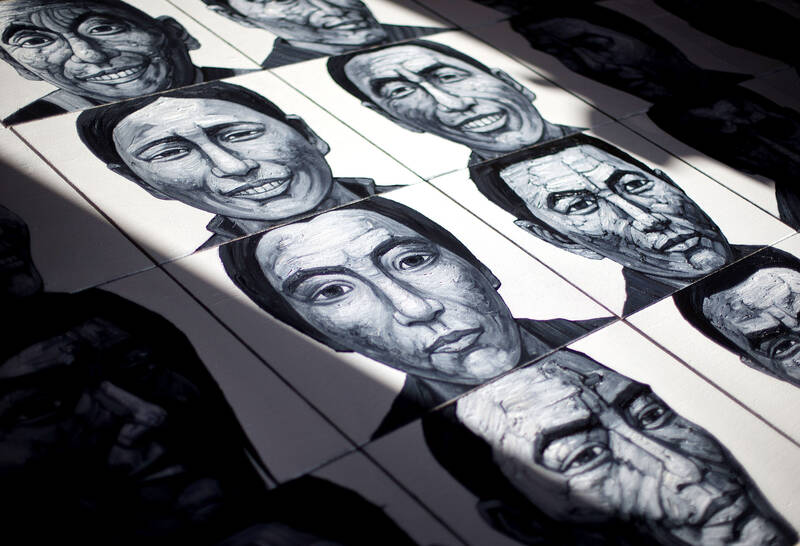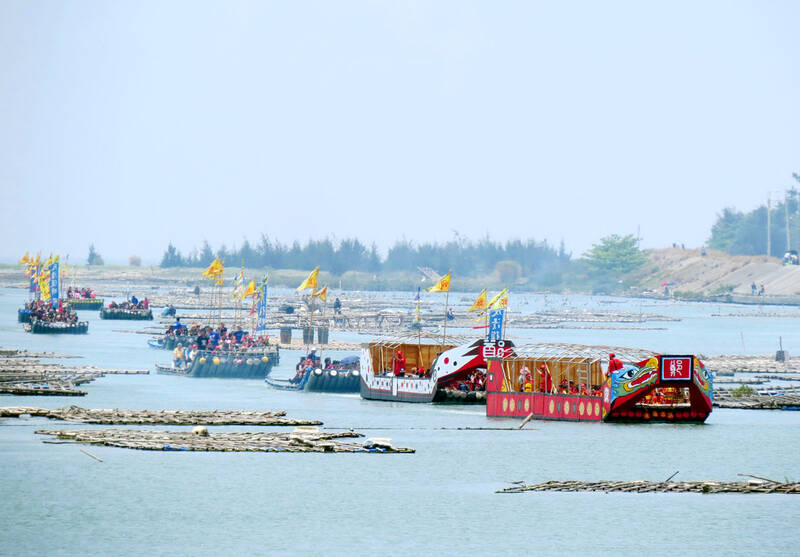Exploring the jangling corners of the Internet the other day, trawling those spaces where weird enthusiasts mount festschrifts for dead ideas, I came across the absurd claim that the northern Philippines had been a Chinese kingdom in the 15th century. Reality tells us that Cabaloan was an independent Austronesian polity that conducted its own foreign policy, including missions to China during that period. We know this, ironically, from the Chinese records referring to it as Fengjiaxilan (馮嘉施蘭).
This would be no more than trivia, if China did not have a history of reconstructing the past in service to its expansionism. For example, in recent years, as an excellent piece by Victoria Jones in the Diplomat noted last month, China has exploited the vague existence of the mountain kingdom of Zhangzhung in what is now Tibet to develop a claim that Tibetans are Chinese.
“China wants to link Tibetan culture and religion to Zhangzhung, thereby peeling it away from its Indian roots,” Jones wrote. In 2013, Jones says, China set up a program, run by the Central Propaganda Department, to develop the idea, which is used not only to erase Tibetan culture, but also advance Chinese designs on Indian territory.

Photo: AP
In a few years foreigners visiting Tibet will be dutifully and often unknowingly repeating this propaganda, and some idiot history journal out there will have a special issue devoted to the history of that imagined kingdom, with half a dozen earnest fantasies from Chinese “scholars” posing as research articles. I know of one case of that already, with another invented Chinese claim.
Asia is littered with possibilities, if you are a Chinese expansionist. Readers are of course aware of Ming Dynasty loyalist and military commander Koxinga, also known as Cheng Cheng-kung (鄭成功), who brought his rearguard actions against the Ming to Taiwan, and with him, support for a Chinese claim. But he was not the only escapee from the Ming collapse who set up a kingdom elsewhere.
In Vietnam on the Gulf of Thailand a Cantonese (or perhaps Hakka) named Mo Jiu (鄚玖), fleeing the Ming debacle, set up a city-state, now called Ha Tien. During its heyday in the 18th century his heirs played off the powerful states around the port to establish control over a section of the vast Mekong Delta that extended into what is now Cambodia. That kingdom was heavily populated by Chinese.

Photo: Tsai Wen-chu, Taipei Times
Across the South China Sea, towards the end of that era a Hakka state called the Lanfang Republic was established in Borneo by Chinese laborers brought in by the ruling Sultans. Quite democratic, it had a citizen militia for an army and an elected president. It was destroyed by the Dutch in the 19th century.
Ominously, the Wiki page on it refers to it as a “Tributary State of Qing China.” Paving the way for some future act of imperial overstretch? Recall that Laos and Cambodia are already slowly becoming protectorates of China, and Cambodia nurses old claims to the area we think of as southern Vietnam.
MANCHU EMPIRE
Between 1644, when the Ming fell to the invading Manchus, and 1911, when the Manchus fell, there was no China. It was a holding of the Manchus, part of their vast empire. That basic fact of history has been disappeared by the way the historiography of China has been shaped by Chinese expansionist propaganda.
In an ideal world, “Qing China” would have a meaning precisely parallel to that of “British India.” Instead, thanks to the way the propaganda of China has shaped the discourse on it, it is common to refer to “Qing China” and mean “China.” Imagine referring to “British India” and meaning “Britain!”
Meanwhile the term “Qing” erases the term “Manchu” and incorporates the Manchu empire into the stream of history that the People’s Republic of China (PRC) uses to underpin its expansion.
This Sinification of people and places to make them accessible to Chinese expansionism has its roots in the debates at the end of the Manchu empire.
Thinkers in China began to imagine how the coming Chinese state might inflate itself out to the old Manchu frontiers, but foundered on the problem of defining who was “Chinese.” As scholar Emma Teng noted in Eurasian: Mixed identities in the United States, China and Hong Kong, 1842–1943, nationalists had called for racial purification in ejecting the non-Chinese Manchus from China prior to the end of the Manchu empire.
This led to a debate among Chinese nationalists over what “race” meant in the Chinese context. If “pure Chinese” meant only the people then viewed as “Han,” then the new Chinese state would be smaller than the Ming empire, but if many different ethnic groups were identified as “Chinese” or better yet “Han,” then the new state could be coterminous with the old empire.
Hence, the “inclusive” racial idea of “the Chinese people” was developed to include Tibetans, Manchus and other non-Chinese peoples and of course, their territories. These people then eventually became Han, because the whole idea of “the Chinese people” is inherently assimilationist: even for the “inclusive” nationalists, “Chinese” ultimately meant “Han.” Inclusivism was simply Sun Yat-sen’s (孫逸仙) temporary move to rally the disparate peoples of the Manchu empire to his cause before drowning them in the sea of Han-ness.
Thanks to this nationalist move and subsequent propagandizing, often reproduced in serious writing, as scholar Dru Gladney once put it: “Few have questioned how the Han became the 94-percent majority of China.”
Today we grapple with the consequences of Han imperialism and colonialism. The PRC projects itself both vertically and horizontally, back into the past, and outward into other people’s lands.
The way we think and write about “who is Chinese” and “what is China” is helping this expansionism. Writers, especially in the serious media, need to stop using “Qing China” and start referring to that empire as the Manchu Empire and its holdings, including China, as colonial holdings. (But the Qing, people will respond, made Taiwan a province. So what? Nobody argues that Algeria wasn’t a French colony because it was a department of France for over a century.)
We need to view the PRC as a colonial and imperial project, smashing and assimilating the scores of ethnic groups who inhabit it, a colonial project that abuses history to support expansion, a colonial project that is coming for the lands surrounding it, as soon as it can evolve the right historical basis.
It is sobering to recall that the Chinese claim to South China, that Austronesian lake in which the Chinese were transients, is a modern historical invention, and yet it is now a fact in the world.
There’s Ha Tien and the Lanfang Republic, both right next to the South China Sea.
Notes from Central Taiwan is a column written by long-term resident Michael Turton, who provides incisive commentary informed by three decades of living in and writing about his adoptive country. The views expressed here are his own.

Eric Finkelstein is a world record junkie. The American’s Guinness World Records include the largest flag mosaic made from table tennis balls, the longest table tennis serve and eating at the most Michelin-starred restaurants in 24 hours in New York. Many would probably share the opinion of Finkelstein’s sister when talking about his records: “You’re a lunatic.” But that’s not stopping him from his next big feat, and this time he is teaming up with his wife, Taiwanese native Jackie Cheng (鄭佳祺): visit and purchase a

April 7 to April 13 After spending over two years with the Republic of China (ROC) Army, A-Mei (阿美) boarded a ship in April 1947 bound for Taiwan. But instead of walking on board with his comrades, his roughly 5-tonne body was lifted using a cargo net. He wasn’t the only elephant; A-Lan (阿蘭) and A-Pei (阿沛) were also on board. The trio had been through hell since they’d been captured by the Japanese Army in Myanmar to transport supplies during World War II. The pachyderms were seized by the ROC New 1st Army’s 30th Division in January 1945, serving

The People’s Republic of China (PRC) last week offered us a glimpse of the violence it plans against Taiwan, with two days of blockade drills conducted around the nation and live-fire exercises not far away in the East China Sea. The PRC said it had practiced hitting “simulated targets of key ports and energy facilities.” Taiwan confirmed on Thursday that PRC Coast Guard ships were directed by the its Eastern Theater Command, meaning that they are assumed to be military assets in a confrontation. Because of this, the number of assets available to the PRC navy is far, far bigger

The 1990s were a turbulent time for the Chinese Nationalist Party’s (KMT) patronage factions. For a look at how they formed, check out the March 2 “Deep Dives.” In the boom years of the 1980s and 1990s the factions amassed fortunes from corruption, access to the levers of local government and prime access to property. They also moved into industries like construction and the gravel business, devastating river ecosystems while the governments they controlled looked the other way. By this period, the factions had largely carved out geographical feifdoms in the local jurisdictions the national KMT restrained them to. For example,